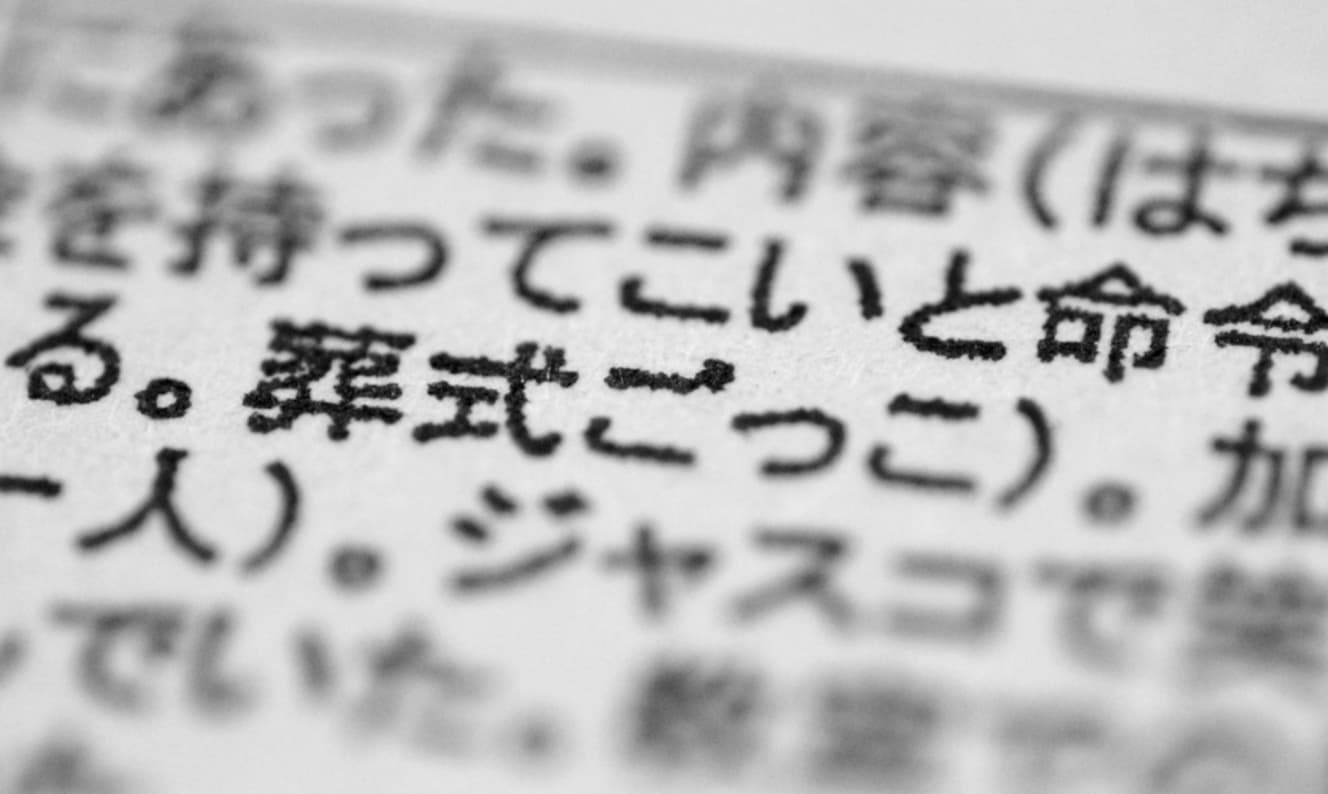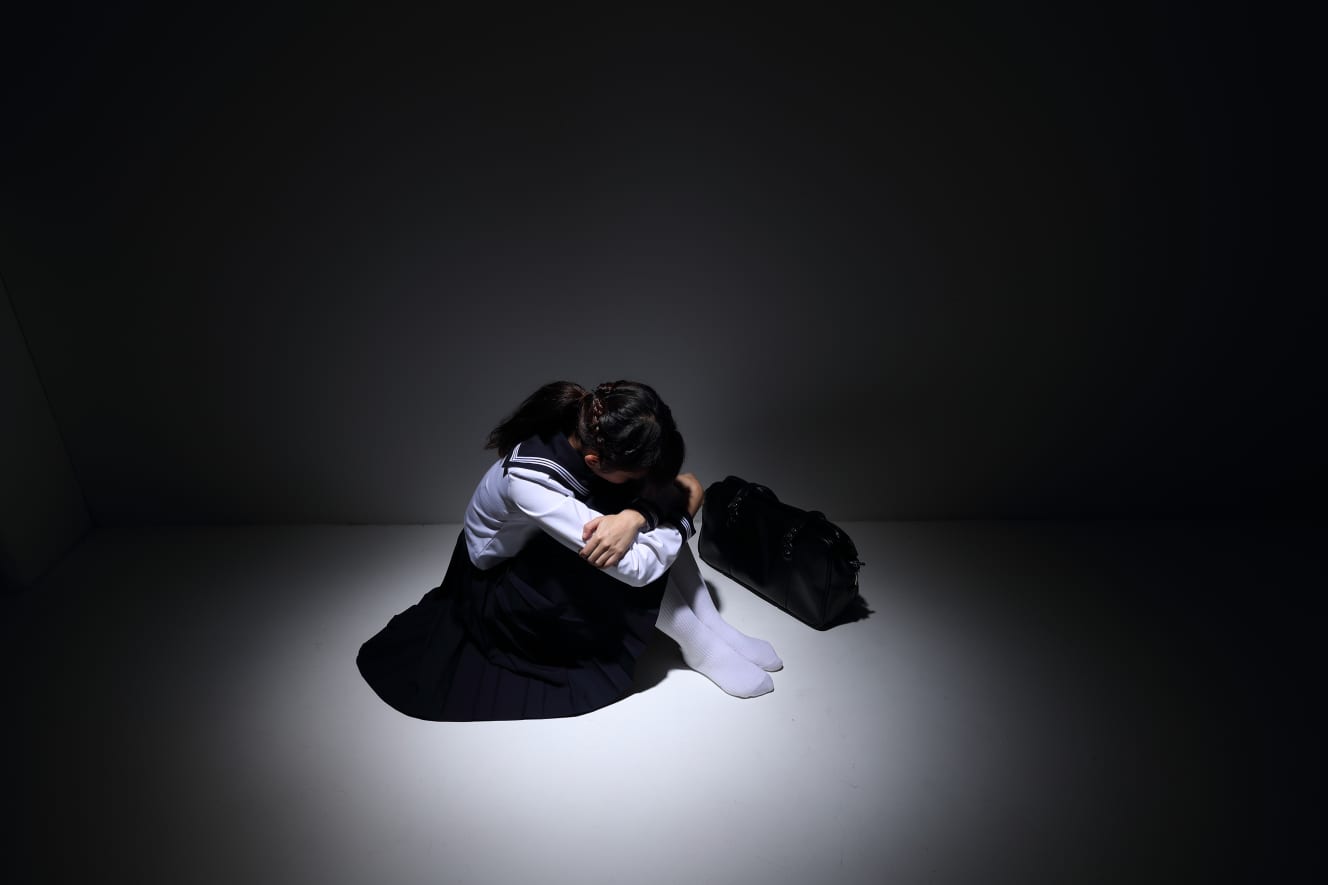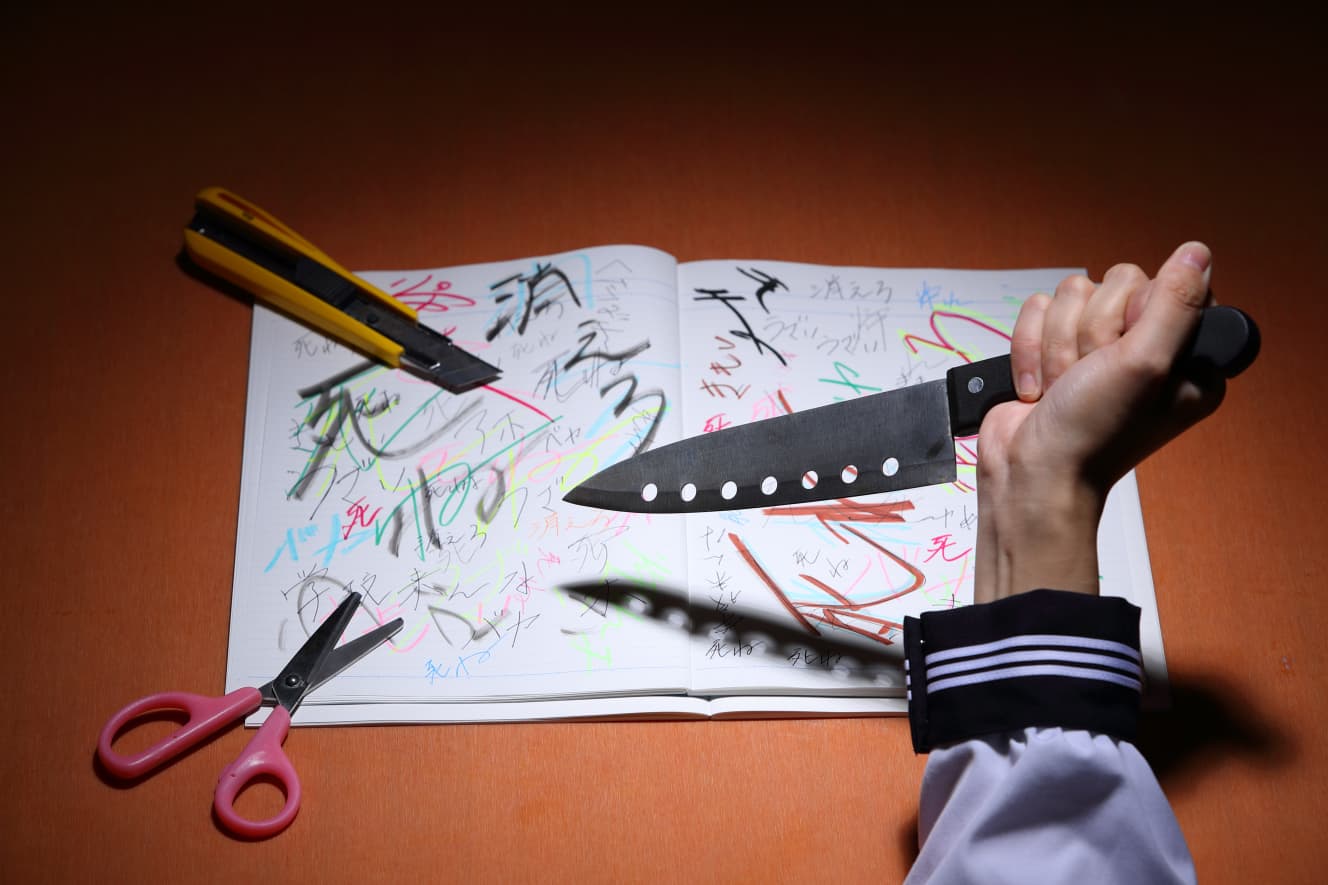The “Heartbreaking Flesh Tales” of Bullying Suicide Victims and Their Bereaved Families Tormented by the Spread of Despicable Videos
Nonfiction writer Kouta Ishii delves into the depths of Japanese society!

I have a video. It is a “funeral game” video created by a junior high school student using free editing software.
The video opens with sad background music. The screen is titled “Funeral for Ako Suzuki (pseudonym). An altar is shown and sutra chanting is played. Soon after, words of condolence from classmates are shown one after another on a message board. The words are so cruel that one cannot believe one’s eyes.
Congratulations on your passing to heaven. Is life over there enjoyable? I think it’s more fun than being with us.
The school is much brighter now that Ako is gone, and I’m glad she’s gone on her trip.
At the end of each of the condolences, the actual names of the classmates are written. At the end of each condolence note, the names of the classmates are given, so that we can see who is participating in this funeral game.
The video ends with a gravestone and a cheerful K-pop song.
‘Is the country and the school serious?’
This was made by several junior high school students for a classmate named Ako Suzuki. They bullied Ako in and out of school. This escalated and eventually led to the creation of this video.
I have covered many cases of bullying suicides. Last year, I met with a bereaved family member who said, “For decades, bullying has been a part of our lives.
Why don’t the government and schools do anything to stop bullying suicides? Kids today say things like ‘die’ and ‘go away’ so easily, but they are not aware, and the adults around them do not teach them, that these words are violent enough to drive people to their deaths. Is that the proper way to live in a society?”
It is true that bullying in schools has been a problem for decades, yet there is nothing to suggest that it has been significantly improved. The same is true of bullying tactics. It is said that the “funeral game” was born in the 1980s, but nearly 40 years later, the same thing is happening again, only in the form of online videos.
There is one thing in common among the bereaved families of the victims of bullying suicides that I have interviewed so far. In every home, the room of the child who committed suicide was left untouched as if time had stopped. In some cases, even the trash in the garbage cans was left untouched.
Whether it has been five or ten years since the suicide, parents are not inclined to clean up the room where their child spent time. It would be nothing less than erasing the traces of their child’s life in this house.

Bullying suicides have received a great deal of attention in society because of the Nakano Fujimi Junior High School bullying suicide case, in which the earlier “funeral game” took place. The deceased was a male student in the second year of junior high school.
There was a group of bullies at the same junior high school, and the boy was used as a punching bag and beaten up for no reason on a daily basis. Playing funeral was an extension of this. They put colored papers on the desks and wrote on them, “Sayonara (good-bye) to XX-kun.
Congratulations on your death.
There were many such inscriptions on the colored papers. Not surprisingly, three other teachers in addition to the homeroom teacher also participated, writing “Kanashii yo,” “Yasurakani,” and so on. The teachers later explained that they had meant it as a joke, but it was obvious that the boys did not take it that way. The boy stopped coming to school and was driven to suicide.
Shortly after the start of the third semester, the boy went to Iwate Prefecture, where his father’s family lived. He hanged himself in the bathroom of a shopping center. In his suicide note, he wrote
I don’t want to die yet either. But if I don’t do anything, I will become a “living jigoku. But I don’t want to see other people sacrificed just because I’m dead. So, please don’t do anything stupid anymore. That’s the last thing I’m asking. (excerpt)
Violence Changes with the Times
This incident sent shockwaves through society, and showed the reality of bullying in schools. Until then, school violence by delinquent students, thinner games, and runaway behavior had been the main issues in schools, but the focus had shifted to bullying.
When I wrote the book “Drifting Children,” a veteran staff member of a Tokyo children’s home once told me the following.
Until about the 1980s, these children used to release their stress in the form of school violence and runaway behavior.
The state saw this as a problem and used police force to forcefully suppress it. However, the students’ stress did not disappear. So they began to hide and turn their aggression on others. That led to an increase in bullying.”
In fact, since this incident occurred, many incidents of bullying leading to suicide have been reported across Japan. One of the most famous is probably the “Nishio City, Aichi Prefecture, Junior High School Student Bullying Suicide Case. The deceased was a male student in the second year of junior high school. He, too, had been subjected to daily beatings and extortion of large sums of money. The boy had taken money from his parents and given it to them in tears, amounting to more than 1 million yen.
However, the boys were cornered when they could not find the demanded money and decided to commit suicide. He decided to commit suicide, and then he strangled himself to death in a tree behind his house. The suicide note that was later found stated the following.
Four people (I’m sorry, I can’t name them) have always taken my money. I always had four people (I’m sorry, I can’t name them) take my money. And today, I couldn’t find any money to take with me, and even if I live from now on…. So…. I want to live happily with everyone again. Shhhh, shhhh, shhhh!
To my family
Thank you very much for the past 14 years. I am leaving. I still have a lot of things I want to do, but I will leave from ・・・・. I am so sorry. (excerpt)
More unfortunately, less than a month after this incident, another junior high school student in the same prefecture took his life due to bullying.

These events led to a nationwide anti-bullying movement in Japan during the 1990s and 2000s. Not only did the government have each school provide anti-bullying education, but it also held a series of posters and events; it even had TV personalities and athletes in commercials calling for an end to bullying. The mass media responded by creating a series of bullying-related features and dramas.
The anti-bullying awareness campaign was successful, and the Japanese people as a whole became aware of the harmful effects of bullying. Nevertheless, not only did bullying not stop, but another problem arose, this time on the school side. This is the cover-up of rampant bullying in schools.
The “Takikawa Elementary School 6th Grade Bullying Suicide” in 2005 became a major topic of conversation. A sixth grade female student in Hokkaido, Japan, strangled to death after being bullied by her classmates. The suicide note was written in a neat style.
She was called “creepy.” ……
In her suicide note to the students of the school, she wrote
I have hated this school and its students since the third grade. It started around the time I was in the third grade. In the 5th grade, people started calling me “creepy,” and it became very hard for me. It escalated. I thought about killing myself several times, but I was too scared to do it. But I was too scared to do it. But now I have made my decision. (excerpt)
However, not only did the school and the city’s board of education refuse to acknowledge that bullying had taken place, they also deny the existence of the suicide note. They insisted that it was just an extension of playful behavior. However, the family of the deceased later disclosed the suicide note and public criticism later revealed that not only the school and the city’s board of education, but also the Hokkaido Teachers’ Union, had been involved in covering up the facts of the incident.
This incident highlighted the cover-up nature of the school. However, the same thing has been repeated many times since then. The most famous example is the “Otsu City junior high school student bullying suicide case” that occurred in 2011. This incident prompted the government to take a serious stand and enact the “Law for the Promotion of Anti-Bullying Measures” in 2001.
Why does this foolish history repeat itself? The person mentioned above says, “The essential problem of children is to solve the problem.
The reason is that they did not try to solve the essential problems that children were facing. Children are still under stress, and simply suppressing school violence or bullying is no different than playing whack-a-mole. You are not solving the root problem.
On the other hand, if bullying is shared by society and schools, when it happens at school, teachers will try to hide it in order to avoid responsibility. Therefore, a cover-up structure is created. No matter how many laws the government makes, in the end, nothing has changed the problems that children are facing.
Not every child is born a bully. It is the warped atmosphere and structure of the home and school that drives some children to bully. But instead of correcting the distortions, they just deal with what happens, and so the same thing will always happen, in slightly different forms.
So how has bullying changed in form in recent years?
Bullying today is more insidious than it was a few years ago, and it is now being carried out through social networking sites, which are children’s communication tools. Children have been told in and out of school that “bullying is wrong” and “bullying is a crime,” so they do not engage in overt bullying. Instead, they have turned to malicious intent by removing themselves from LINE groups, exposing their privacy on the Internet, and slandering them through anonymous DMs. They have become more aggressive. In addition, tools that are erased after a certain amount of time, such as Instagram Stories, are sometimes used.
The video I introduced at the beginning of this article is a case in point. Today’s kids know that uploading to YouTube or other sites will be recognized as cyberbullying. So they use the time-limited tools of social networking sites to play funeral videos. When it is uploaded, the cusmates see it, but it is erased the next day, so it is not exposed to adults. Even if the victimized students later want to sue the school, they have no proof and the teachers have no way to confirm it, so they cannot adequately follow up.
Video software makes it more realistic: ……
A high school teacher speaks as follows.
‘Bullying today is becoming invisible to teachers…they can’t detect it even if bad words are flying around in the closed space of social networking sites. Even if a victim complains, there is no way to warn them if it has been deleted.
It is also becoming more difficult to determine where and to what extent bullying is considered bullying. For example, there is the removal of a LINE group. The victim suffers psychological damage, but the perpetrator can say, ‘I just stopped because I got tired of the group interaction. ‘ Then it’s hard for the teachers to decide if they should be careful or not.”
For children, school activities and online communication are connected. However, teachers are not able to go into the Internet. This is why they are unable to take effective measures until problems such as truancy or suicide occur.
The teacher continues, “In the old days, we used to play funeral games.
In the past, playing funeral games was a form of bullying that should never be tolerated. But now, if you use video software, you can make it more realistic and less obvious. The more sophisticated the bullying becomes, the more the victim students have nowhere to run.
Perhaps with the proliferation of giga-schools, meta-verse, and online games, bullying will become more invisible in the future. But there is no fundamental solution to this problem.
A private IT company that is in charge of bullying prevention expressed the same opinion.
In this light, it can be said that anti-bullying measures are entering a different phase than in the past. Perhaps attempts to curb it on a superficial level will only make it go deeper and deeper underground. It is time, then, to turn our attention to the distortion of families and schools, and to the resolution of the problems faced by the perpetrators.
Parents who have lost their children to bullying suicides are unanimous in saying, “We have to do everything we can to prevent the same thing from happening again.
I am fighting to prevent the same thing from happening again.
It is up to us as a society to support them in this fight.
Interview and text by: Kota Ishii
Born in Tokyo in 1977. Nonfiction writer. Graduated from Nihon University College of Art. He has reported and written about culture, history, and medicine in Japan and abroad. His books include "Kichiku" no Ie - Wagakko wo Kajiru Oyasato Tachi" ("The House of 'Demons' - Parents Who Kill Their Children"), "43 Kichiku no Kyoi: In Depth in the Case of the Murder of a Student at Kawasaki Junior High School," "Rental Child," "Kinshin Homicide," and "Kakusa to Segregation no Shakai Chizu" ("Social Map of Disparity and Division").
Photo: Naoki Nishimura/Afro by Kyodo News Inc.